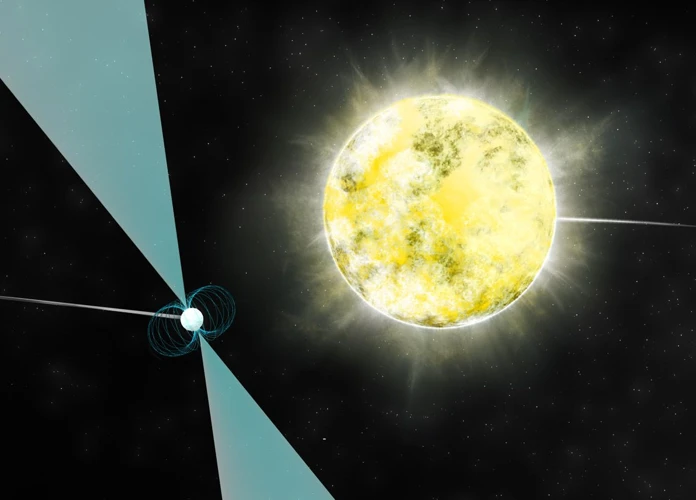Welcome to the fascinating world of degenerate matter in stellar cores! Have you ever wondered what happens to the remnants of dying stars? Well, look no further, as we dive deep into the realm of white dwarfs and neutron stars. These peculiar objects are made up of degenerate matter, a mind-boggling form of matter that challenges our understanding of the universe. In this article, we will explore the formation, structure, properties, and characteristics of white dwarfs and neutron stars. We will also compare these celestial bodies, highlighting their differences in mass, size, density, temperature, and more. So, prepare to embark on a cosmic journey and uncover the mysteries of degenerate matter in stellar cores!
Contents
- What is Degenerate Matter?
- White Dwarfs
- Neutron Stars
- Degenerate Matter in Extreme Conditions
- Comparing White Dwarfs and Neutron Stars
- Applications and Implications
- Conclusion
-
Frequently Asked Questions
- 1. How is degenerate matter different from regular matter?
- 2. What causes degenerate matter to form in stellar cores?
- 3. Can degenerate matter exist on Earth?
- 4. What is the role of electron degeneracy pressure in white dwarfs?
- 5. How are neutron stars different from white dwarfs?
- 6. Are there different types of neutron stars?
- 7. How do scientists study degenerate matter in stellar cores?
- 8. Can degenerate matter ever revert back to regular matter?
- 9. Are there other examples of degenerate matter in the universe?
- 10. What are the implications of studying degenerate matter?
- References
-
Frequently Asked Questions
- 1. What is degenerate matter?
- 2. How are white dwarfs formed?
- 3. What is the structure of white dwarfs?
- 4. What are the properties of white dwarfs?
- 5. How are neutron stars formed?
- 6. What is the structure of neutron stars?
- 7. What are the properties of neutron stars?
- 8. What are the different types of neutron stars?
- 9. What happens to matter in extreme conditions found in white dwarfs and neutron stars?
- 10. What are the applications and implications of studying degenerate matter in stellar cores?
- References
- Read More
What is Degenerate Matter?
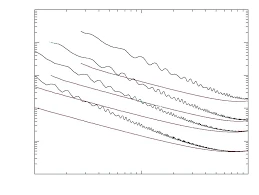
Degenerate matter is an extraordinary state of matter that defies our everyday understanding of solids, liquids, and gases. It occurs when matter is subjected to extreme conditions of temperature and pressure. In this bizarre state, electrons are packed so tightly together that they lose their individual identities and merge into a sea of negatively charged particles. This causes electron degeneracy pressure to counterbalance the inward pull of gravity, preventing the collapse of the stellar core. Similarly, in the case of neutron stars, the matter is so densely packed that not only electrons, but also protons merge to form neutrons, giving rise to neutron degeneracy pressure. The phenomenon of degenerate matter is essential for the existence and stability of objects like white dwarfs and neutron stars. It allows these celestial bodies to resist gravitational collapse and presents us with a unique glimpse into the strange and awe-inspiring nature of our universe.
White Dwarfs
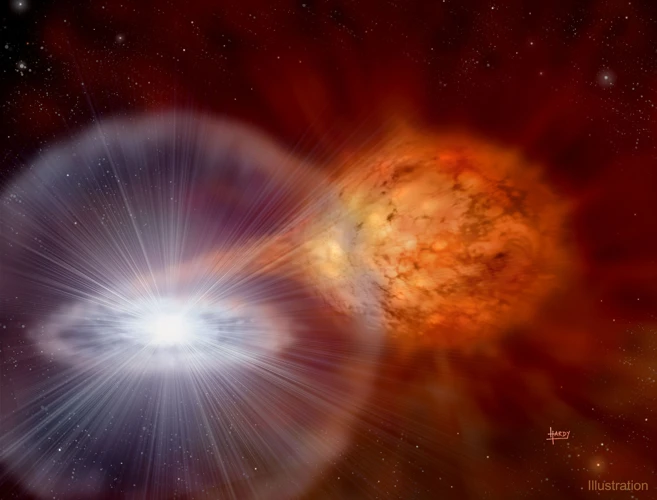
White dwarfs are fascinating celestial objects that represent the remnants of low to medium mass stars after they have exhausted their nuclear fuel. These stellar remnants are incredibly dense, with masses similar to that of the Sun but squeezed into a volume roughly the size of Earth. When a star becomes a white dwarf, its outer layers are expelled, forming a beautiful planetary nebula. The core that remains is composed primarily of degenerate matter, consisting of electrons packed tightly together due to the immense gravitational forces. The pressure created by electron degeneracy prevents further collapse and maintains the white dwarf’s structure. These stellar remnants are incredibly hot when they are newly formed, with temperatures reaching up to several hundred thousand degrees Celsius. However, over time they gradually cool down and fade away. The study of white dwarfs provides valuable insights into the evolution and life cycle of stars, offering a glimpse into the diverse and awe-inspiring nature of the cosmos.
Formation and Structure
White dwarfs are formed at the end of a star’s life cycle. When a star exhausts its nuclear fuel, it undergoes gravitational collapse, shedding its outer layers and leaving behind a dense core. This core, composed mainly of carbon and oxygen, contracts under its own gravity. As the core shrinks, electrons are squeezed closer together, reaching a point where their degeneracy pressure halts further collapse. This marks the formation of a white dwarf. White dwarfs have a unique structure, consisting of a solid core and an outer layer composed of lighter elements. These objects are incredibly dense, packing a mass comparable to that of the Sun into a volume roughly the size of Earth. Imagine an object as massive as the Sun, but only about the size of a planet! The immense pressure in a white dwarf’s core is supported by electron degeneracy pressure, counteracting the pull of gravity.
On the other hand, neutron stars have a different origin and structure. They are formed from the remnants of massive stars that have exploded in supernovae. During the supernova explosion, the core of the star collapses under gravity, compressing protons and electrons so tightly that they merge to form neutrons. This results in an extremely dense and compact object known as a neutron star. Neutron stars have a solid crust made up of atomic nuclei, a fluid-like layer of neutron-rich material beneath the crust, and a superfluid core consisting of neutrons. The crust of a neutron star is so strong that it can support mountains on its surface, while the core experiences immense pressures sustained by neutron degeneracy pressure.
Properties and Characteristics
Properties and characteristics of degenerate matter in stellar cores are truly extraordinary. In the case of white dwarfs, these compact objects typically have a mass similar to that of our Sun but are incredibly dense. A teaspoon of white dwarf material would weigh tons on Earth due to its high gravitational pull. Their surface temperatures range from thousands to tens of thousands of degrees Kelvin, causing them to emit a faint glow, mainly in the ultraviolet range. White dwarfs slowly cool down over time, gradually fading away. On the other hand, neutron stars are even denser than white dwarfs. Despite having a mass of about one to three times that of our Sun, they are only a few kilometers in diameter, making them incredibly compact. Neutron stars also possess intense magnetic fields, which can be a million billion times stronger than Earth’s magnetic field. These magnetic fields give rise to fascinating phenomena such as pulsars, rapidly rotating neutron stars that emit beams of light and radio waves as they spin. The properties and characteristics of degenerate matter in stellar cores provide us with a mesmerizing glimpse into the extreme conditions and mind-bending physics existing in our universe.
Observations and Discoveries
Observations and discoveries related to degenerate matter have provided us with valuable insights into the nature of white dwarfs and neutron stars. Through extensive observations using telescopes and advanced instrumentation, astronomers have been able to study these exotic objects in great detail. The presence of white dwarfs was first predicted by Subrahmanyan Chandrasekhar in the 1930s, and their existence was confirmed through observations of certain stars that exhibited peculiar characteristics. The discovery of pulsars in the 1960s shed light on the existence of neutron stars. Pulsars are rapidly rotating neutron stars that emit beams of electromagnetic radiation, which can be detected on Earth as regular pulses. These observations not only confirmed the existence of neutron stars but also provided evidence of their extreme density and rapid rotation. Further observations have revealed various subtypes of white dwarfs and neutron stars, including magnetic white dwarfs and magnetars, which possess exceptionally strong magnetic fields. Studying the observations and behavior of these celestial objects continues to deepen our understanding of the properties and behavior of degenerate matter in stellar cores.
Neutron Stars
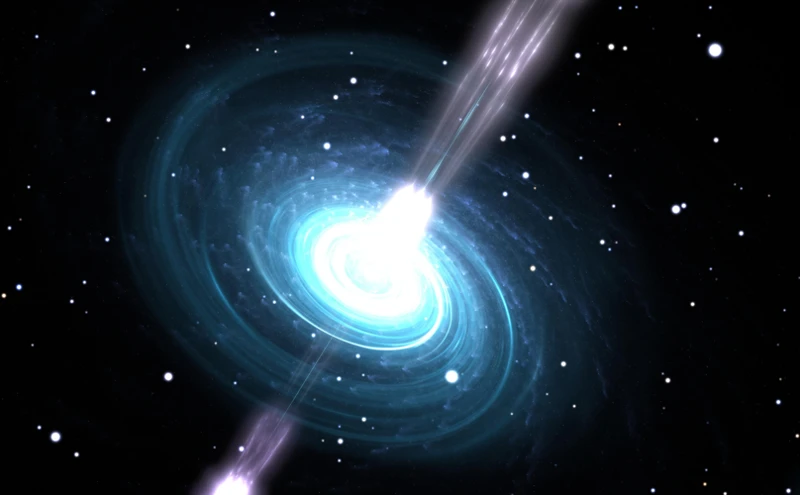
Neutron stars are one of the most fascinating and enigmatic objects in the universe. Born from the explosive death of massive stars in a supernova event, these celestial wonders are incredibly dense and compact. Neutron stars are composed primarily of neutrons, hence their name, which are formed when protons and electrons combine under immense pressure. The result is a dense core, typically measuring only about 20 kilometers in diameter, yet containing a mass several times greater than that of our Sun. Due to their high density, neutron stars possess a gravitational pull that is millions of times stronger than that of Earth. These remarkable objects often feature intense magnetic fields, spinning rapidly and emitting beams of radiation. The study of neutron stars not only sheds light on the nature of matter under extreme conditions, but also offers insights into the fundamental properties of the universe itself. So, let’s delve deeper into the formation, structure, and characteristics of these cosmic phenomena.
Formation and Structure
When it comes to the formation and structure of white dwarfs and neutron stars, the processes differ for each type of stellar object. White dwarfs are formed during the late stages of stellar evolution, particularly for stars with masses up to around 8 times that of our Sun. As these stars exhaust their nuclear fuel, they shed their outer layers in a process called planetary nebula ejection, leaving behind a hot, dense core composed mainly of carbon and oxygen. The intense gravitational pressure compresses the core, causing it to become degenerate matter. The size and mass of a white dwarf are constrained by the electron degeneracy pressure, with a typical mass comparable to that of the Sun but packed into a volume about the size of Earth.
On the other hand, neutron stars are created from the remnants of more massive stars, typically those with masses exceeding that of the Sun. When such a massive star exhausts its nuclear fuel, a catastrophic supernova explosion occurs. This explosion expels the outer layers of the star into space, while the core collapses under gravitational forces. The fusion reactions responsible for supporting the core against gravity cease, and it collapses to an incredibly dense state. The core is then transformed into a neutron star, consisting mostly of neutrons tightly packed together. Neutron stars are incredibly compact, with diameters of only a few tens of kilometers, yet they possess masses roughly 1.4 times that of the Sun.
White dwarfs are formed from lower mass stars that shed their outer layers, leaving behind a degenerate core composed of carbon and oxygen. Neutron stars, on the other hand, are created from the explosive supernova deaths of massive stars, leading to the formation of an incredibly dense core consisting primarily of neutrons.
Properties and Characteristics
Degenerate matter in white dwarfs and neutron stars possesses unique properties and characteristics that set them apart from conventional matter. Let’s take a closer look at some of these intriguing features:
- Density: Degenerate matter is incredibly dense. In white dwarfs, the density can be around 1 ton per cubic centimeter, equivalent to the mass of an entire planet packed into a small region. Neutron stars, on the other hand, are even denser, with densities reaching a mind-boggling several hundred million tons per cubic centimeter.
- Pressure: The immense density of degenerate matter leads to extraordinary pressure. In white dwarfs, the pressure can amount to billions of times the pressure at the Earth’s surface. Neutron stars, however, exhibit even more extreme pressures, reaching up to 10^30 times the Earth’s atmospheric pressure.
- Magnetic Fields: Neutron stars are known for their incredibly strong magnetic fields, which can range from 10^8 to 10^15 Gauss. These magnetic fields are a million to a trillion times stronger than those on Earth and are responsible for phenomena such as pulsars and magnetars.
- Temperature: White dwarfs are relatively hot objects, with temperatures ranging from a few thousand to tens of thousands of Kelvin. Neutron stars, on the other hand, can have surface temperatures exceeding 1 million Kelvin.
- Size: White dwarfs typically have a size comparable to that of the Earth, with a radius ranging from a few thousand to tens of thousands of kilometers. In contrast, neutron stars are much smaller, with radii on the order of 10 kilometers or less, making them incredibly compact objects.
These extraordinary properties and characteristics make degenerate matter in white dwarfs and neutron stars objects of great scientific interest, challenging our understanding of the fundamental laws of physics and providing us with invaluable insights into the nature of the universe.
Types of Neutron Stars
Neutron stars are incredibly dense and have fascinating variations in their characteristics based on different factors. Let’s take a closer look at the different types:
- Radio Pulsars: These are the most common type of neutron stars and emit beams of electromagnetic radiation along their rotational axis. As they rotate, the beams sweep across the sky, causing a periodic pulsating effect that can be detected by radio telescopes.
- X-ray Pulsars: X-ray pulsars are neutron stars that emit highly energetic X-rays due to the accretion of matter from a companion star. The intense gravitational pull of the neutron star attracts matter from its companion, forming an accretion disk that heats up and emits X-rays.
- Magnetars: Magnetars are neutron stars with extremely powerful magnetic fields. These magnetic fields are so intense that they can produce bursts of X-rays and gamma rays, making magnetars one of the most luminous objects in the universe.
- Binary Neutron Stars: Binary neutron stars are systems where two neutron stars orbit each other. These systems can produce some of the most energetic events in the universe, such as neutron star mergers, which can result in the formation of gravitational waves and the release of vast amounts of energy.
- Quark Stars: Quark stars are hypothetical types of neutron stars that consist of a dense core of fundamental particles known as quarks. It is believed that under extreme pressure, the protons and neutrons inside the neutron star may break down into their constituent quarks, forming a quark star.
These diverse types of neutron stars exhibit unique properties and behaviors, contributing to our understanding of the extreme conditions present in the universe.
Degenerate Matter in Extreme Conditions
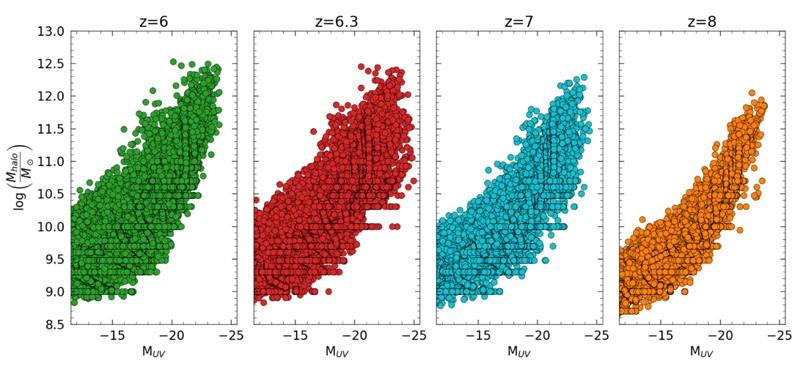
When degenerate matter is subjected to extreme conditions, it exhibits extraordinary and mind-bending properties. In the case of white dwarfs, the matter is squeezed to such densities that a teaspoon of white dwarf material would weigh several tons on Earth. The temperature of white dwarfs can reach tens of thousands of degrees Celsius, causing them to emit intense radiation, making them visible as bright points of light in the night sky. On the other hand, neutron stars take degeneracy to a whole new level. These incredibly dense objects can contain more mass than our Sun squeezed into a sphere the size of a city. The gravitational pull on the surface of a neutron star is so strong that it causes time dilation, distorting the perception of time for an observer near its surface. Neutron stars also generate powerful magnetic fields that can be millions of times stronger than Earth’s magnetic field. These extreme conditions offer a glimpse into the astonishing physics that governs the behavior of matter under such intense pressures and temperatures.
Comparing White Dwarfs and Neutron Stars
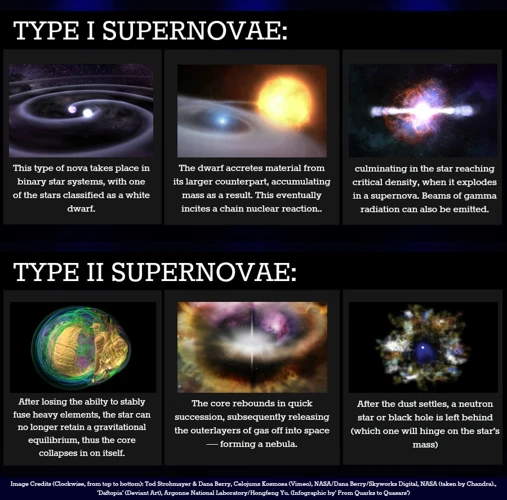
When comparing white dwarfs and neutron stars, there are several key differences that set these celestial objects apart. Firstly, in terms of mass and size, white dwarfs are typically more massive than neutron stars, with masses ranging from 0.6 to 1.4 times that of our Sun, while neutron stars are more massive, typically around 1.4 to 2 times the mass of the Sun. However, white dwarfs are smaller in size, with diameters around the size of Earth, whereas neutron stars are incredibly compact and have diameters of only a few kilometers. Moving on to density and pressure, white dwarfs are incredibly dense, with densities on the order of millions of grams per cubic centimeter, whereas neutron stars are even denser, with densities surpassing billions or even trillions of grams per cubic centimeter. As for temperature and emission, white dwarfs emit energy from residual heat and typically have surface temperatures ranging from 4,000 to 150,000 Kelvin, while neutron stars have extremely high surface temperatures, emitting X-rays and sometimes gamma rays as a result of their intense magnetic fields. Finally, when considering lifespan and evolution, white dwarfs cool down over billions of years and eventually fade away, while neutron stars have much longer lifespans and can exist for billions of years, undergoing various evolutionary processes such as accretion from a companion star or merging with another neutron star. White dwarfs and neutron stars represent two fascinating cosmic entities with their own distinct properties and characteristics.
Mass and Size
When it comes to comparing white dwarfs and neutron stars, one of the significant differences lies in their mass and size. A white dwarf typically has a mass comparable to that of the Sun, but it is compressed into a much smaller volume. In fact, a white dwarf can be as small as the Earth but still contain the mass of a star. This extreme compression leads to incredibly high density.
On the other hand, neutron stars are even more compact. They are the remnants of massive stars that have undergone a supernova explosion. Neutron stars are incredibly dense, with the mass of several suns packed into a sphere only about 20 kilometers (12 miles) in diameter. This means that a teaspoon of neutron star material on Earth would weigh billions of tons!
It’s mesmerizing to think about the sheer mass and density of these celestial objects. The contrasting sizes of white dwarfs and neutron stars highlight the incredible forces at work in the universe.
Density and Pressure
When it comes to density and pressure, white dwarfs and neutron stars are in a league of their own. White dwarfs are incredibly dense objects, with densities ranging from about 1 to 1 million grams per cubic centimeter. To put that into perspective, a teaspoon of white dwarf material would weigh as much as a truck! This tremendous density arises from the gravitational compression caused by the degenerate matter within the core. The pressure inside a white dwarf is also staggering, reaching values of billions to trillions of times greater than the pressure on Earth. This immense pressure is a result of the equilibrium between the inward force of gravity and the outward pressure exerted by the degenerate electrons.
Neutron stars, on the other hand, take density to a whole new level. These cosmic behemoths are so dense that a sugar cube-sized amount of neutron star material would weigh as much as Mount Everest! Neutron stars have densities approaching a mind-boggling 1 billion tons per teaspoon. This extreme density is a consequence of the collapse of the stellar core and the formation of tightly packed neutrons. What’s even more astonishing is the pressure that exists within a neutron star. The pressure at the core of a neutron star is believed to be 10^30 to 10^35 times greater than the pressure on Earth. This unimaginable pressure arises from both the compression caused by gravity and the repulsive forces between neutrons.
The density and pressure found within white dwarfs and neutron stars are beyond comprehension, pushing the boundaries of our understanding of the physical world. These extraordinary conditions create some of the most extreme environments in the universe, with gravitational forces and pressures that defy our everyday experiences.
Temperature and Emission
The temperature of white dwarfs and neutron stars plays a crucial role in determining their emission properties. White dwarfs, which are hot remnants of low to medium mass stars, can have surface temperatures ranging from 8,000 to 40,000 Kelvin. This heat is primarily residual, resulting from the gravitational contraction that occurred during their formation. As a result, white dwarfs emit most of their radiation in the form of visible light, making them visible to astronomers.
Neutron stars, on the other hand, are incredibly hot and can have surface temperatures exceeding one million Kelvin. These extreme temperatures are due to the immense energy released during their formation, as well as ongoing processes such as nuclear reactions and intense magnetic fields. The high temperatures of neutron stars result in the emission of radiation across a broad spectrum, from X-rays to gamma rays. This intense emission allows scientists to study these objects and gain insights into their exotic properties and physical processes.
Lifespan and Evolution
The lifespan and evolution of white dwarfs and neutron stars are fascinating processes shaped by the unique properties of degenerate matter. Let’s explore them further:
- White Dwarfs: After the nuclear fusion reactions cease, a dying star sheds its outer layers, leaving behind a dense core composed mainly of carbon and oxygen. This core undergoes gravitational compression, leading to the formation of a white dwarf. Over time, white dwarfs cool down and gradually fade away. Their evolution is a slow process, with no significant changes in size or mass. Eventually, they will reach the endpoint of their existence, becoming cold, dark objects known as black dwarfs. However, the timescale for black dwarf formation is estimated to be longer than the current age of the universe, so no black dwarfs have been observed yet.
- Neutron Stars: The evolution of neutron stars is more dramatic and explosive. When a massive star exhausts its nuclear fuel, it undergoes a supernova explosion, leaving behind a highly compacted core of degenerate matter. Neutron stars are incredibly dense and have powerful magnetic fields. Over time, they gradually cool down and emit radiation, but their lifespan is relatively short compared to white dwarfs. In some cases, neutron stars can transform into pulsars, rapidly rotating objects that emit beams of electromagnetic radiation as they spin. Pulsars are fascinating cosmic phenomena that provide valuable insights into the properties of degenerate matter.
The lifespan and evolution of white dwarfs and neutron stars are influenced by the unique properties of degenerate matter. While white dwarfs slowly fade away, neutron stars undergo explosive events and can transform into pulsars. These processes offer a glimpse into the cosmic cycles of stellar remnants and the intriguing behavior of degenerate matter. To further explore the wonders of the universe, check out our article on the cultural significance of the Gemini constellation.
Applications and Implications
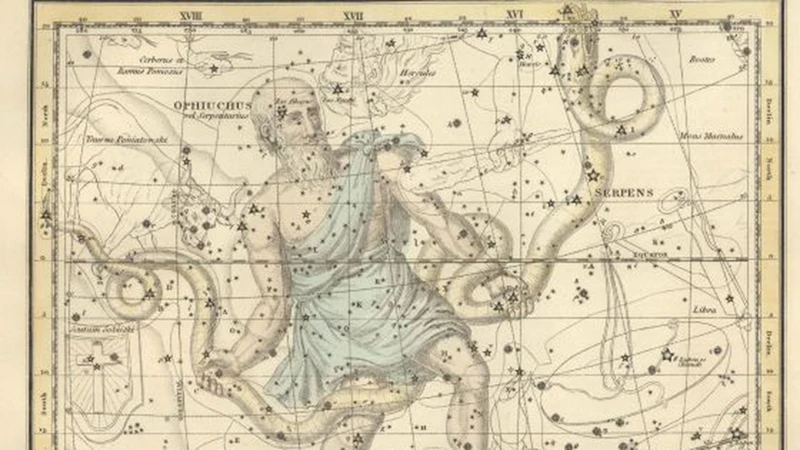
Degenerate matter in stellar cores has significant applications and implications across various fields of study. Let’s explore some of them:
- Astrophysics Research: Studying white dwarfs and neutron stars provides valuable insights into the nature of degenerate matter. This research helps us understand the behavior of dense objects and the underlying principles that govern fundamental particles. It also contributes to our knowledge of stellar evolution and the life cycle of stars.
- Gravitational Wave Detection: Neutron stars, being incredibly dense and compact, can generate gravitational waves when they undergo cataclysmic events such as mergers or supernova explosions. Detecting these gravitational waves provides us with an opportunity to study the fabric of spacetime and opens up new avenues for studying the universe.
- Astrophysical Laboratories: White dwarfs and neutron stars serve as natural laboratories to study extreme physical conditions that cannot be replicated on Earth. By examining the behavior of matter under such extreme pressures and densities, scientists can gain a deeper understanding of high-energy physics and the behavior of matter under extreme circumstances.
- Cosmological Significance: The existence and properties of degenerate matter have broader implications for our understanding of the universe. They influence processes such as stellar nucleosynthesis, the formation of heavy elements, and the overall evolution of galaxies. By studying degenerate matter, we can unravel the mysteries of cosmic evolution.
As we continue to explore and research degenerate matter in stellar cores, we uncover new applications and implications that stretch the boundaries of our knowledge and contribute to our understanding of the universe we inhabit.
Conclusion

In conclusion, the study of degenerate matter in stellar cores opens up a fascinating window into the extreme conditions of the cosmos. Through the exploration of white dwarfs and neutron stars, we have gained valuable insights into the behavior and properties of matter under tremendous pressures and temperatures. These celestial objects, composed of degenerate matter, challenge our understanding of the universe and inspire further research and inquiry. As we continue to unravel the mysteries of degenerate matter, we unlock a deeper appreciation for the immense diversity and complexity of the cosmos. So, whether you’re intrigued by the cultural significance of constellations like Gemini or fascinated by the hidden secrets of Tarot cards, the study of degenerate matter in stellar cores offers a captivating journey of discovery.
Frequently Asked Questions

1. How is degenerate matter different from regular matter?
Degenerate matter is fundamentally different from regular matter because it exists under extreme conditions of temperature and pressure. In degenerate matter, electrons or even protons lose their individual identities and merge together, forming a dense sea of particles that exhibit unique properties.
2. What causes degenerate matter to form in stellar cores?
Degenerate matter forms in stellar cores when stars reach the end of their life cycles. As nuclear fusion ceases, the star’s core collapses, leading to a tremendous increase in density and pressure. The intense gravitational forces overcome the electrostatic repulsion between particles, causing electrons and protons to merge and form degenerate matter.
3. Can degenerate matter exist on Earth?
No, degenerate matter cannot exist on Earth under normal conditions. The extreme pressure and temperature needed to create degenerate matter can only be found in the cores of dying stars or in environments such as neutron stars.
4. What is the role of electron degeneracy pressure in white dwarfs?
Electron degeneracy pressure plays a crucial role in white dwarfs. As the star’s core collapses, the electrons become highly compressed and resist further collapse due to the Pauli exclusion principle. This pressure counteracts gravity, preventing the white dwarf from collapsing further.
5. How are neutron stars different from white dwarfs?
Neutron stars are different from white dwarfs in terms of their composition and structure. While white dwarfs are made up mostly of electron-degenerate matter, neutron stars consist of densely packed neutrons due to the extreme pressure inside their cores.
6. Are there different types of neutron stars?
Yes, there are different types of neutron stars. Some examples include pulsars, magnetars, and millisecond pulsars. These neutron stars exhibit unique properties and characteristics, such as emitting powerful beams of radiation, possessing incredibly strong magnetic fields, or rotating hundreds of times per second.
7. How do scientists study degenerate matter in stellar cores?
Scientists study degenerate matter in stellar cores through observations using telescopes and space probes. They analyze the radiation emitted by white dwarfs and neutron stars, measure their properties, and study the effects of degenerate matter on the surrounding space.
8. Can degenerate matter ever revert back to regular matter?
Under normal conditions, degenerate matter cannot revert back to regular matter. Once electrons or protons merge in degenerate matter, they remain in that state. However, in certain extreme conditions, such as during a supernova explosion, the matter may undergo a phase transition, transforming into a different state.
9. Are there other examples of degenerate matter in the universe?
Yes, other examples of degenerate matter in the universe include certain types of exotic particles, such as quark-gluon plasma, which is thought to exist at extremely high temperatures and pressures, such as those found in the early universe or in neutron stars.
10. What are the implications of studying degenerate matter?
Studying degenerate matter provides valuable insights into the nature of the universe, the behavior of matter under extreme conditions, and the life cycles of stars. It helps us understand the mechanisms that govern stellar evolution, the formation of celestial objects, and the extraordinary physics that exist beyond our everyday experiences.
References
Frequently Asked Questions

1. What is degenerate matter?
Degenerate matter is a state of matter characterized by extremely high density, where the laws of classical physics no longer apply. It occurs when matter is compressed to such a degree that the electrons within the atoms are forced into lower energy states, resulting in intense pressure and unique physical properties.
2. How are white dwarfs formed?
White dwarfs are formed from the remnants of low to medium mass stars, such as the Sun, after they exhaust their nuclear fuel. As the star runs out of fuel, it sheds its outer layers, leaving behind a hot, dense core composed of degenerate matter.
3. What is the structure of white dwarfs?
White dwarfs have a layered structure consisting of a dense core made up of degenerate matter, surrounded by a thin layer of non-degenerate matter. The core primarily consists of carbon and oxygen nuclei, while the outer layers are composed of hydrogen and helium.
4. What are the properties of white dwarfs?
White dwarfs are incredibly dense, with mass comparable to the Sun but a size similar to that of the Earth. They have high surface temperatures and emit a faint glow of thermal radiation. Additionally, they possess strong gravitational fields and lack nuclear fusion reactions.
5. How are neutron stars formed?
Neutron stars are formed from the remnants of massive stars, typically those with more than eight times the mass of the Sun, after they undergo a supernova explosion. During the explosion, the core collapses under its own gravity, leading to the formation of a neutron star.
6. What is the structure of neutron stars?
Neutron stars have a dense and compact structure, consisting primarily of degenerate matter in the form of neutrons. The core is incredibly dense, with a mass several times that of the Sun packed into a sphere with a diameter of about 10 kilometers.
7. What are the properties of neutron stars?
Neutron stars are known for their immense gravitational pull, which is approximately two billion times stronger than the Earth’s gravity. They also have extremely fast rotation rates, often spinning hundreds of times per second, resulting in the emission of beams of electromagnetic radiation known as pulsars.
8. What are the different types of neutron stars?
There are several types of neutron stars, including pulsars, magnetars, and quark stars. Pulsars are rapidly rotating neutron stars that emit beams of radiation, while magnetars are neutron stars with incredibly strong magnetic fields. Quark stars are theoretical objects that consist of an even denser form of matter known as quark matter.
9. What happens to matter in extreme conditions found in white dwarfs and neutron stars?
In extreme conditions, matter becomes highly compressed, leading to the formation of degenerate matter. In white dwarfs, electrons are pushed into lower energy states, while in neutron stars, protons and electrons combine to form neutrons. These extreme conditions result in unique physical properties, such as high density and intense pressure.
10. What are the applications and implications of studying degenerate matter in stellar cores?
Studying degenerate matter in stellar cores can provide insights into the behavior of matter under extreme conditions. It can help us understand the mechanisms behind stellar evolution, the formation of compact objects like white dwarfs and neutron stars, and even shed light on fundamental physics principles. This knowledge can have broader implications in fields such as astrophysics, nuclear physics, and cosmology.

